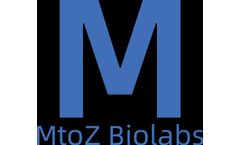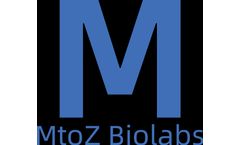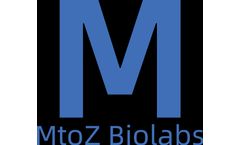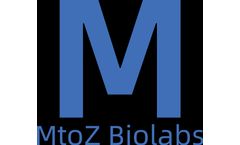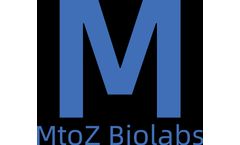Protein Targeted Articles & Analysis
113 articles found
What Exactly Is Protein Ubiquitination? At its core, ubiquitination is a type of Post-Translational Modification (PTM) where a small, 76-amino-acid protein called ubiquitin (Ub) is attached to a target protein. ...
These studies aim to identify whether antibodies or T cells generated against a particular antigen react with similar proteins found in different tissues, which can lead to unintended effects and complications. ...
Recombinant protein expression is a cornerstone of modern biopharmaceutical development, providing the means to produce proteins with therapeutic potential, enzymes, and antibodies. ...
At the heart of this technology lies the use of adeno-associated viruses (AAVs), which serve as robust delivery vehicles for light-sensitive proteins into targeted neuronal populations. This article delves into the significance of optogenetics AAV production services, highlighting their role in advancing biomedical research and therapeutic applications. ...
Alfa Cytology has revealed new FAP-targeted therapeutics development services that aim to develop precise and effective cancer treatments. Alfa Cytology has introduced its groundbreaking initiative which targets fibroblast activation protein(FAP) for cancer therapies. These solutions focusing on FAP to improve treatment accuracy and deliver ...
Immunohistochemistry: Frozen sections enable the study of protein expression within lung tissues. Specific antibodies can be used to target and visualize proteins associated with inflammatory responses, fibrosis, and cellular proliferation. ...
One such paradigm that has gained significant traction in recent years is the development of PROTAC (Proteolysis Targeting Chimeras) technology. This groundbreaking approach unlocks new potential in targeting previously “undruggable” proteins, paving the way for transformative therapies in various diseases. ...
TALENs (Transcription Activator-Like Effector Nucleases): TALENs are engineered proteins that can be designed to target specific DNA sequences. By creating double-strand breaks, they can facilitate the insertion of new DNA sequences or the disruption of gene function. ...
Key Proteins That Control the Cell Cycle Several groups of proteins play a critical role in regulating the cell cycle: 1. ...
They can be used to identify novel genes related to diseases, screen for potential therapeutic targets, and produce recombinant proteins for therapeutic use. Furthermore, the accessibility of fosmid libraries enables the mining of genetic resources from diverse organisms, including those that are less well-characterized. ...
What Is PROTAC Technology? Proteolytic targeting chimera (PROTAC) is a new type of drug design technology that works by inducing the degradation of target proteins. ...
Unlike traditional antivirals that target specific viral proteins, these novel compounds are designed using advanced techniques such as artificial intelligence and machine learning. ...
Product transitions from research-use products to cGMP manufacturing are easiest if GMP is available from the same supplier that provides the research-use-only (RUO) protein. Despite more stringent manufacturing processes and analytical testing, there may be little variation between proteins in vials. ...
Some of the main functions of peptidomimetics include inhibiting or modulating enzymes & proteins, targeting specific receptors, and enhancing drug stability & bioavailability.Specifically, peptidomimetics can bind to enzymes and block their activity, making them useful in the development of cancer treatment. In addition, peptidomimetics can disrupt or ...
Glycosylation modification is a chemical modification process on biomolecules, involving the combination of sugar molecules with other biomolecules (usually proteins). This modification process plays a crucial regulatory role within the organism, particularly in terms of protein function and stability.Glycosylation modifications also impact antibodies, manifested ...
Immunoprecipitation is a commonly used method for detecting protein interactions. Through specific immune reactions, the target protein and the proteins it binds to are "captured". ...
Due to the importance of many proteins localized in centrosomes in cell movement, such as isomorph CRA and HS actin gamma1, antibodies targeting these proteins have also become powerful tools for treating related diseases. ...
They are responsible for several life-sustaining processes, including energy production, reducing free radicals, and maintaining cellular signaling. Proteins within the mitochondria play a key role in these processes.Why Sequence Mitochondrial Proteins?The sequencing of the mitochondrial proteome (i.e., the collection of all proteins in the ...
Mass Spectrometry TechnologyMass spectrometry technology directly measures the mass and structure of T cell receptor proteins to identify differences among different T cell clones. By analyzing specific proteolytic fragments of TCR proteins, this technology can identify the types of TCR, thereby revealing the diversity and specificity of T cells.(1) Sample ...
With technological advancements, we now have more novel avenues to choose from, such as recombinant proteins, engineered cells, and DNA encoding proteins, all of which can display a variety of epitopes or potential antibody recognition sites. Compared to these newer forms of antigens, peptides may be slightly lacking in epitope coverage, as they cannot display ...








